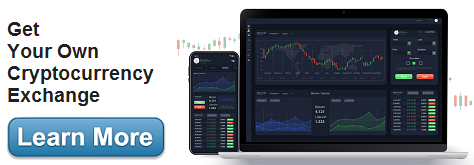Why CFDs are often under Scanner by Regulatory Bodies?
- February 17, 2022
- Jennifer Moore

The rise in global cryptocurrency trading has experienced traders looking forward to advanced trading options allowing high leverage options with minimal funds. Crypto CFDs are the talk of the town, bringing features from conventional contract trading. Regulatory bodies around the world are however wary of the development, either banning or placing strict regulations on this trading option. Beginners should be wary of the risks associated with traditional CFDs.
Global Market Stance on CFDs
US regulations prohibit investors from trading in CFDs. However, there are several nations that do not have a CFD ban in effect. Examples include the UK, Germany, Canada, Switzerland, Spain France, and more. CFD trading has increased significantly across the UK in recent times.
CFDs: A Brief Outline
CFD or Contract for Difference is a trading option featuring an agreement between the buying and selling parties to trade-off the difference between an asset’s existing valuation and valuation at the time of the contract. An interesting feature of CFDs is the fact that assets remain in the CFD provider’s possession, rather than the investor.
The products are leveraged i.e. it offers market exposure to traders for a fraction of the trade margin (investment). Investors can reap benefits through long positions during the asset’s rising valuation and short positions during the descent.
The opening and final values are taken into consideration on contract closure. For a positive difference between the final and the initial values, investors receive the difference as profit from the CFD service provider. Else, they incur losses and must pay the remaining difference to the CFD provider.
Also Read: Crypto CFDs: Decoding Maximum Investment Opportunities and Associated Risks
Risk of CFDs
Regulatory bodies around the world issue warnings on the risks associated with CFD trading. The apparent CFD merits often cloak the possible risks, especially under high leverage conditions. Risks are proportional to the leverage, and there is no standardization. Exchanges offering CFD trading options have separate regulations, terms, and costing. Not all of them are ideal for retail investors.
Market experts recommend CFD trading only for investors willing to speculate on a short-term basis. CFDs are tools for experienced traders specializing in volatile markets capable of withstanding heavy losses, or those looking to hedge against exposures in their current portfolio. Risks often overlooked include the following:
a) Counterparty(Broker) Risk
In a CFD, counterparty refers to the selling party- the company providing the asset (crypto, stock, commodity, or others). Since the asset remains in possession with the trading exchange, the only item exchanged is the issued contract. This may lead to the trader’s exposure to other business collaborators of the CFD service provider.
A significant associated risk is the possibility of the counterparty failing to fulfill the financial obligations as agreed upon. It is crucial to run a background check and verify the CFD broker’s credibility based upon parameters like longevity, financial upstanding, and reputation.
b) Market Risk
A CFD is similar to a derivative in the sense that its valuation is dependent upon an underlying asset. The underlying asset valuation may rise or fall, and even the most seasoned trading experts can not predict with cent percent accuracy. Under general circumstances, traders opt for long positions while expecting profits, and short positioning to cut back losses.
Multiple factors can change market valuations, including government policy. Small changes are amplified manifold in CFDs due to leverage conditions. Fluctuating markets may even lead to secondary margin payments.
c) Client Money Risk
Nations that allow CFD trading usually have legislations for protecting investor funds from potentially dangerous CFD practices. Funds transferred for CFDcontracts must be kept separate from the service provider’s capital to avoid hedging. But, laws do not prevent the pooling of the client capital into one or multiple accounts.
Upon contract agreement, CFD service providers usually withdraw a margin amount at the beginning and may later request upon further requirement. If other clients fail to fulfill margin requirements in the pool account, CFD service providers are eligible to draft, which may possibly impact returns.
d) Liquidity Risk
There are several global parameters that may impact financial transactions and increase the chances of loss. A lack of trading on the underlying asset may lead to liquidity risk for the existing contract.
Gapping refers to a phenomenon where the CFD price decreases before the completion of a CFD trade-off at the pre-fixed price due to market volatility. Once in effect, CFD investors have to settle for lower profits.
Also Read: Blockchain of Things: Growing Adoption with Blockchain Prominence, IoT and Web 3.0
Final Words
All forms of CFDs are risky for traders due to a lesser extent of market regulation, including crypto CFDs. The trading option is suitable for day traders with experience. The option to leverage maximum gains with smaller margins is valid, but so are risks and subsequent losses.
Categories
- AI (6)
- Altcoins (10)
- Banking (10)
- Bitcoin (133)
- Bitcoin ETF (11)
- Bitcoin Price (30)
- Blockchain (47)
- Brokering World Hunger Away (16)
- Business (8)
- CBDC (11)
- COVID-19 (3)
- Crypto ATMs (1)
- Crypto Banking (15)
- Crypto Bill (1)
- Crypto broker platform (26)
- Crypto Investment (3)
- Crypto Markets (3)
- Crypto Payment (28)
- Crypto Prices (1)
- Crypto Trading (91)
- Cryptocurrency (373)
- Cryptocurrency Exchange (103)
- Data Visualization (2)
- Decentralized Finance (7)
- DeFi Payment (9)
- DEX (3)
- Digital Currency (22)
- Ethereum (2)
- FAQ (6)
- Finance (24)
- Financial Equality (4)
- Financial Freedom (8)
- Forex (24)
- ICO (1)
- Investment (11)
- Mining (3)
- News (66)
- NFTs (2)
- P2P (1)
- PayBitoPro (632)
- PayBitoPro Coin Listing (6)
- PayBitoPro Exchange (2)
- Post COVID Digital Transformation (1)
- Press Release (130)
- Privacy & Security (3)
- Real Estate (1)
- Stablecoin (4)
- Technology (14)
- Uncategorized (3)
- US Presidential Election (2)
- Utility Coin (1)
- Web3 Wallets (1)
- White Label Crypto Broker Solution (1)
- White Label Crypto Exchange (6)
Recent Posts
- Smarter Trading and Safer Platform Will Become A Reality After Embracing AI
- Why Should Crypto Investors Be Cautious of The Law?
- The Evaluation and Analysis of New Cryptocurrencies
- Why Are the Cryptocurrency Payment Systems in Business Becoming Popular?
- The Prevalent Crypto Trends That You Must Not Miss





